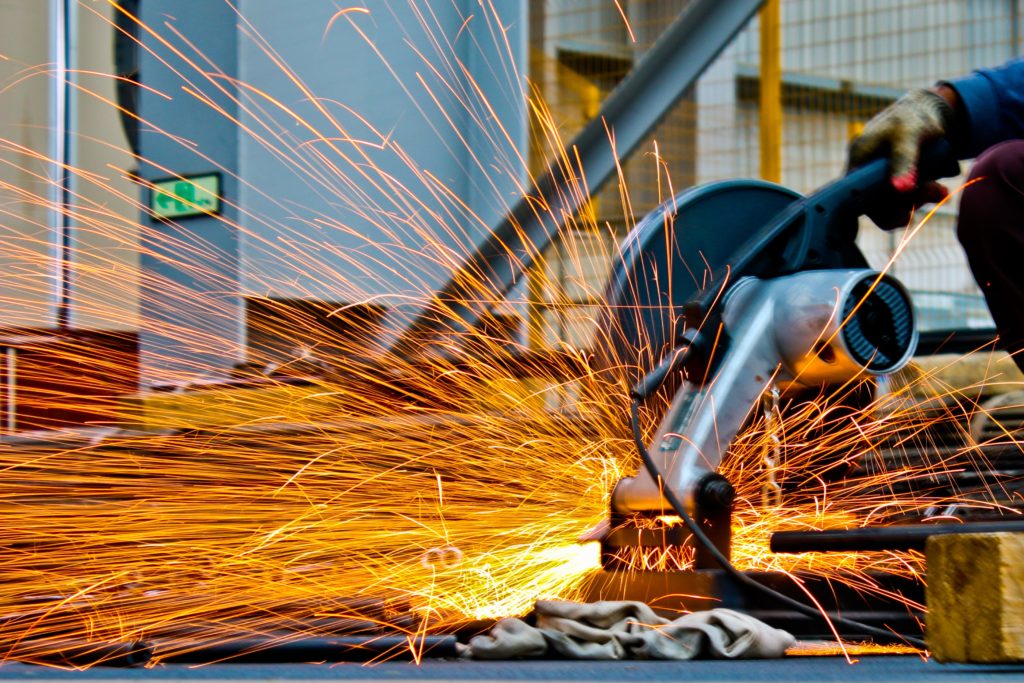When mobile workers in lean shops move into and out of noise-hazardous areas, they can’t simply wear maximum protection at all times to block out every hazardous noise.
Here are some tips on selecting the right protector for any situation that can solve these problems.
Despite the ongoing industry-wide attention and investment in hearing conservation programs and engineering solutions, extreme noise levels and the potential for noise-induced hearing loss (NIHL) are still being encountered by workers throughout the metal fabrication industry. A properly fitted foam earplug provides a simple solution for the highest level of protection, recommended where exposure to potentially damaging levels of noise may be encountered. A wide variety of foam earplug shapes and sizes are offered, however foam ear plugs are not always the safest and most reliable protection for your ears. Over the past few years, we are seeing a shift in Occupational Health and Safety persuading workers and managers to adopt custom, personal or moulded hearing protection. To learn some tips for achieving the best possible fit of hearing protection see below.
If dirty or gloved hands make use of a roll-down foam earplug difficult, consider a hearing protector with a stem. Even some foam earplugs and custom ear plugs include a stem for insertion like the dB Blocker Grip. The new dB Blocker Grip innovative design targets industries where dirt, grime and larger hands may be an issue.
The new Grip’s non-slip integrated handle is formed in a single piece of dB Blocker silicone in order to deliver hassle-free ease of insertion  and removal. Learn more.
and removal. Learn more.
Multiple-use hearing protection often make the best option for intermittent noise levels, or for situations where levels may require raised voices for clear communication. These protectors can be quickly and easily removed or replaced as hazardous noise levels increase or subside. Multiple-use models are usually available in a variety of shapes and sizes to match the variations in users’ ear canals.
Ear muffs can be used either alone or with insertable hearing protection of some type. In general, the larger the earcup of the muff, the greater the attenuation or lessening of the noise. The rule of thumb for dual protection is to add 5 dB to the attenuation of the hearing protection for the use of an earmuff in combination. Generally the earplug or ear mold is the more variable fit.
Where both hearing protection and clear communications are required, modern PPE technology offers two types of solutions. (Both beat the “old school” answer to this situation, wherein workers in a noisy environment just take out their earplugs whenever someone speaks to them. For obvious reasons, this is not a recommended solution. That is why more workers are wearing dB Blockers as its hearing protection you can hear through. The proprietary frequency tuned filter allows interpersonal communication without removal. People can communicate in noise better while wearing their dB Blockers™ hearing protectors than if they were to remove them. Your hearing loss prevention program will not interfere with productivity. Learn more.
For the most technologically sophisticated solution, consider a communication system. This advanced device incorporates hearing protection, active noise reduction, and voice signal amplification. It’s recommended where clear communication is critical, as in workplaces where misunderstanding a verbal communication could cause an injury or even a fatality.
In lean manufacturing, as more workers become mobile and move between or into and out of noise-hazardous areas, challenges with mobile workers present unknown exposure levels, uncertain availability of protection equipment, and difficulty in monitoring PPE use. PPE should be readily available at each worksite, everywhere that it is needed. Workers should know when and how to use their hearing protection. A good rule of thumb is that if you have to shout to speak to someone approximately an arm’s length away, you should both have hearing protection on.
The metalworking industry presents a stunning variety of hearing hazards, as punching, cutting, casting, stamping and forming machinery, equipment and tools of all varieties assault the ears with all sorts of constant, intermittent, and impact noise. In such a dynamic environment, with people and machines constantly on the move, it’s critical that workers maintain situational awareness to operate safely. However, they can’t simply wear maximum protection at all times to block out every hazardous noise. Such overprotection could too easily make them miss important voice communications or warning signals.
Nor can they periodically remove their hearing protectors to monitor machines or speak with colleagues. That’s a sure way to risk permanent, noise-induced hearing loss.
HEARING CONSERVATION
Whether a formal hearing conservation program is required or not, the goal is to have a safe work environment at all work locations. Workers should go home with the same level of health and wellness the brought to work. Using the right hearing protection maintains a worker’s hearing health, but also allows that worker to safely complete his or her job.
Regulations require that employers furnish adequate hearing protection on the job. Finding the right hearing safeguards for the myriad needs at worksites across the metalworking industry not only provides compliance: it ensures that workers remain protected and productive. Learn more about improving productivity in the metal machine & fabrication industry or download the PDF – Click here to download a brochure (Adobe PDF)
SOURCE
